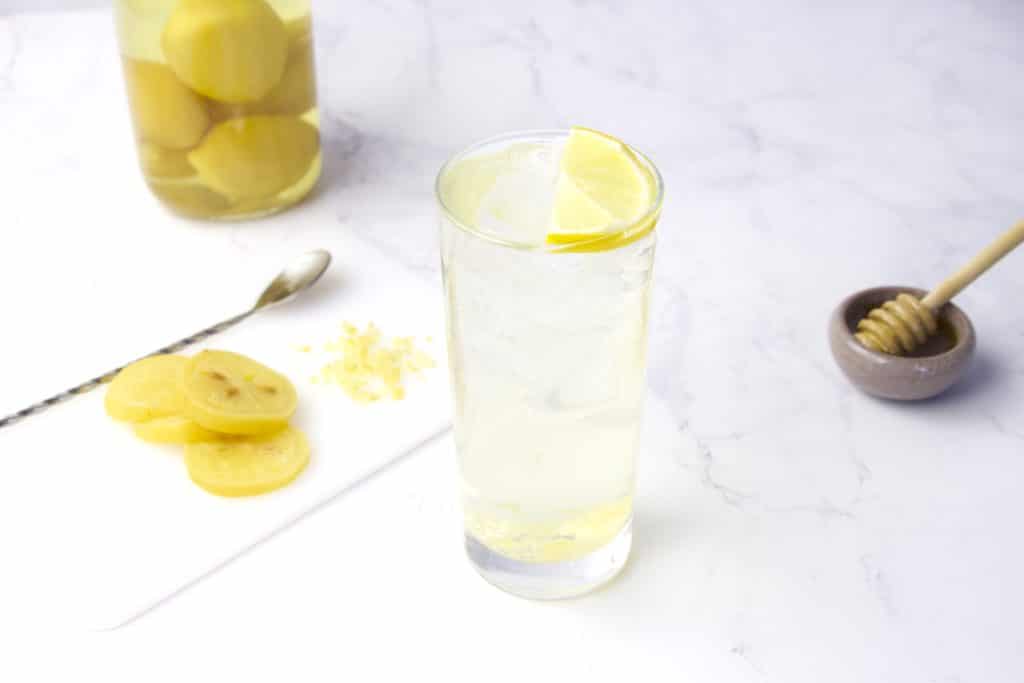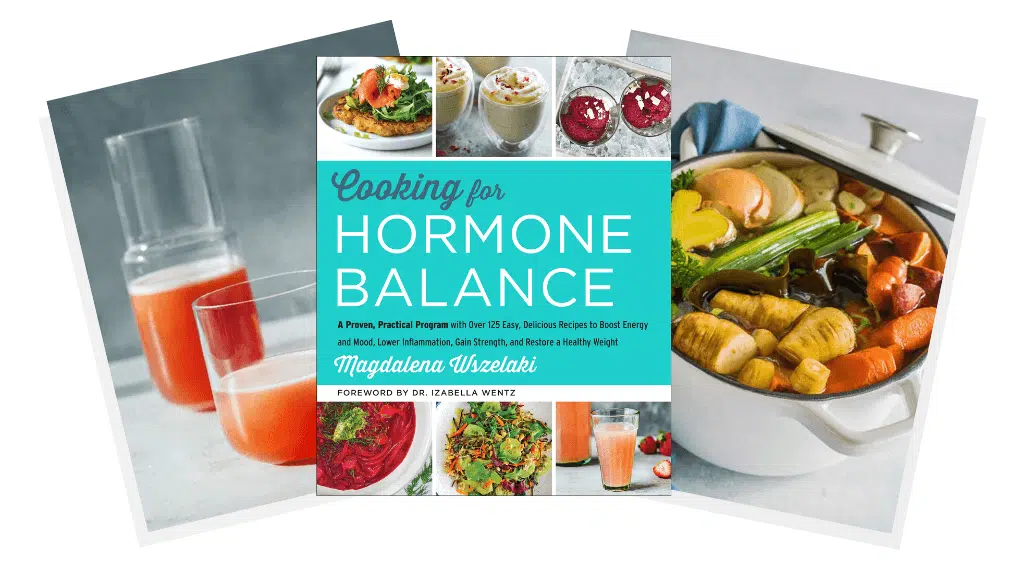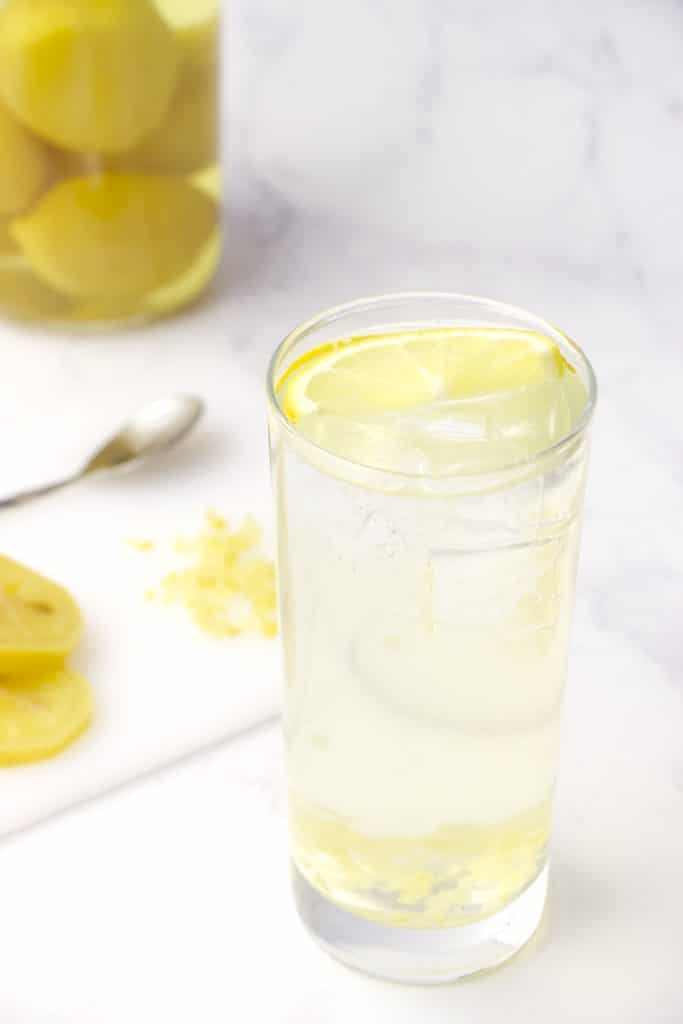Here is yet another way to use preserved lemons in your cooking. As a reminder, I shared with you here how to make preserved lemons. They are wonderful for adding in more probiotics for gut health.
This simple sparkling tonic is so light and refreshing plus it gives you a dose of healthy gut bacteria. Try it as a “mocktail” if you’re planning to participate in Dry January this year.
The fermentation process transforms the lemon peel’s bitterness into a unique taste that will amaze you. Preserved lemon is also high in probiotics and contains liver detoxing essential oils in the peel. Use the rind and discard the pulp. It is a staple condiment in North Africa and is available at any Middle Eastern grocery.
[adrotate banner=”19″]
- ¼ preserved lemon peel, minced
- 1 tablespoon honey
- 8 ounces sparkling water
- Ice cubes
- In a tall glass, combine minced preserved lemon peel and honey.
- Stir until well combined.
- Pour in sparkling water and stir until thoroughly mixed.
- Then, in a serving glass, place ice cubes at the bottom and pour lemon, honey water over the top to finish.
This preserved lemon tonic delivers a healthy dose of probiotics. You can find more recipes like it in my cookbook, Cooking For Hormone Balance, with over 125 easy, delicious recipes to nourish your body and balance your hormones without calorie restriction or deprivation.
All of the recipes are based on twenty hormone-supporting superfoods and twenty hormone-supporting super herbs—with modifications for Paleo, Paleo for Autoimmunity (AIP), anti-Candida, and low-FODMAP diets. Get the cookbook here.




I notice the recipes that use preserved lemon only use the peel. Do you not use the flesh of the preserved lemon for anything?
Good question. I want to know that, too.
Hi Marianne and Joan,
You can use the flesh in this recipe if you like or you can also use it in this one as well https://hormonesbalance.com/recipes/olive-and-preserved-lemon-tapenade/.
How do you make the preserved lemon peel please?
Here is the link for you! https://hormonesbalance.com/?s=preserved+lemon
Enjoy! HB Support
How do you make the preserved lemon peel please?
Check the link below! =)
https://hormonesbalance.com/recipes/how-to-make-preserved-lemon/
You can also search for our article “How to Make Preserved Lemons”
What brand of sea salt do you use? Lately I have been reading about concerns of the mercury content of sea salt due to the pollution of the oceans. Which makes me wonder why the Celtic sea salt I used for over a decade is no longer available anywhere. Another blogger who writes about home fermentation advises using Himilayan pink salt. I’ve tried using it in cooking and to make homemade saurkraut. I just don’t care for the flavor and the level of saltiness. I’ve tried other brands of sea salt and wasn’t satisfied with the product. Any recommendations you have will be appreciated. Thanks!
Magdalena typically recommends unprocessed sea salt (such as Celtic, from Utah) or pink Himalayan salt.. While we do not have any specific brand recommendations, I typically shop mine at local natural health food stores and/or apothecary.
If you find a particular brand you love, let us know. =)
Healthy Regards,
HB Team
Selina Naturally has several Celtic Salts. I’ve tried 3 different ones and love each of them!
Thank you for the recommendation!